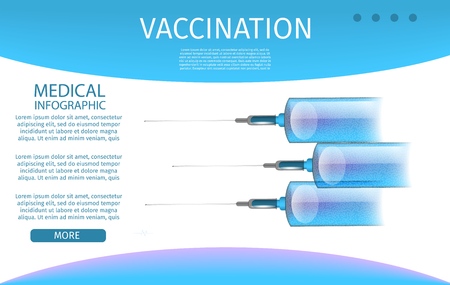Understanding CoolSculpting: What Is Fat Freezing?
When you first hear about “fat freezing,” it sounds like something out of a sci-fi movie, right? But CoolSculpting is 100% real and has become one of the most buzzed-about ways to contour your body across the U.S. The science behind it is called cryolipolysis, which basically means using controlled cooling to target and destroy stubborn fat cells that just won’t budge with diet or exercise.
The process is pretty straightforward. During a session, a technician places an applicator on the area you want to treat—think love handles, belly, thighs, or even under the chin. The device cools your fat cells to a temperature that causes them to crystallize and die off, without damaging your skin or surrounding tissue. Over the next few weeks, your body naturally processes and eliminates those dead fat cells.
So why has CoolSculpting blown up in popularity here in America? For one, it’s non-surgical—no scalpels, no anesthesia, no downtime—which makes it super appealing for guys (and women) who want results but don’t have time for recovery. Plus, it’s FDA-cleared and done in med spas and dermatology offices from LA to New York. In a culture where looking fit can feel as important as being fit, more people are turning to fat freezing as a way to fine-tune their bodies when the gym just isn’t cutting it.
How CoolSculpting Differs From Traditional Weight Loss
If you’ve ever hustled through endless cardio, counted every carb, or even tried intermittent fasting, you know the grind that comes with losing weight the classic way. Diet and exercise are about burning more calories than you take in—plain and simple. But CoolSculpting? That’s a whole different ballgame. Instead of torching calories, CoolSculpting uses controlled cooling to target and freeze fat cells, which your body then naturally eliminates over time. It’s not about overall weight loss; it’s about spot reduction in those stubborn areas that don’t budge no matter how hard you hit the gym.
| Method | Main Focus | Process | Results | Best For |
|---|---|---|---|---|
| Diet & Exercise | Overall Weight Loss | Calorie deficit, increased activity | Gradual fat loss across entire body | Losing pounds, improving health |
| CoolSculpting | Targeted Fat Reduction | Freezes & eliminates fat cells in treated areas | Slimmer contour in specific spots | Trouble zones (love handles, belly, chin) |
So here’s the real talk: CoolSculpting is not a weight loss treatment in the traditional sense. It doesn’t shrink your waistline on the scale like diet and exercise can. Instead, it helps sculpt those specific problem areas—the love handles that laugh at your crunches or the double chin that just won’t quit. If your goal is to drop serious pounds, you’ll want to stick with healthy eating and regular workouts. But if you’re already close to your goal weight and just want to fine-tune your look, CoolSculpting can give you that extra edge without breaking a sweat.

3. What Happens During a CoolSculpting Session?
If you’re considering CoolSculpting, it’s only natural to wonder what actually happens when you step into the clinic. Let me walk you through the process from a guy’s perspective—no sugarcoating, just real talk about what to expect before, during, and after your session.
First off, before your appointment, you’ll usually have a consultation. The specialist will check out the areas you want to target (for me, it was the stubborn love handles that just wouldn’t budge no matter how many crunches I did). They’ll map out a treatment plan and answer any questions—don’t be shy about asking everything on your mind. After that, you’ll schedule your session.
On the day of treatment, you roll into the clinic wearing comfy clothes (trust me, you don’t want anything tight right after). The staff will mark the spots getting zapped and place a cool gel pad to protect your skin. Then comes the applicator—a device that basically sucks up your fat like a vacuum. It feels weird at first; think strong tugging and intense cold. Honestly, it’s not painful, but it is uncomfortable for the first 5-10 minutes. After that, most guys zone out with their phone or even take a nap because the area goes numb pretty fast.
The session itself takes anywhere from 35 minutes to an hour per area. You’re not under anesthesia or anything—you’re totally awake and can shoot off emails or scroll TikTok if that’s your thing. When they remove the applicator, your treated area will look kind of like a stick of butter (no joke), but they massage it out right away. That massage can feel tender or even tingly, but it’s over quick.
As far as recovery goes, there’s basically zero downtime—you can walk right out and go about your day. For me, there was some mild redness and numbness for a couple of weeks (think: pins and needles after sitting cross-legged too long), but nothing that kept me from hitting the gym or going to work. Some guys get swelling or light bruising, but it fades pretty quickly.
Long story short: CoolSculpting isn’t some magical fat-melting experience where you walk in chunky and leave ripped, but it is surprisingly chill as far as cosmetic treatments go. If you know what to expect—and keep your expectations realistic—it’s an easy addition to your weight loss journey.
4. Who’s a Good Candidate for CoolSculpting?
If you’re thinking about CoolSculpting as a way to help with weight loss, it’s important to know that not everyone is an ideal candidate. In the U.S., clinics follow certain eligibility criteria to make sure you get the safest and most effective results. Based on my own research and experience talking to providers, here’s what you need to know about who usually sees the best results and what requirements you’ll have to meet.
Typical Candidates for CoolSculpting
CoolSculpting works best for people who are generally close to their target weight but struggle with stubborn fat pockets that don’t go away with diet or exercise. If you’re looking for a quick fix or hoping to drop a ton of pounds, this probably isn’t your best bet. The treatment is designed more for body sculpting than traditional weight loss.
| Ideal Candidate Traits | Not Ideal If… |
|---|---|
| BMI under 30 | BMI over 30 |
| Healthy lifestyle habits | Major weight fluctuations |
| Localized fat (belly, thighs, flanks, chin) | Generalized obesity |
| No plans for immediate pregnancy | Pregnant or breastfeeding |
| No history of cryoglobulinemia or cold-related conditions | Certain medical disorders involving cold sensitivity |
Common Eligibility Requirements in the U.S.
Clinics in the States have some basic requirements before you can get CoolSculpting:
- BMI: Usually under 30; some places will go up to 35 if you’re otherwise healthy.
- Adequate “pinchable” fat: You need enough fat in the target area for the applicator to grab onto—no fat, no freeze.
- No contraindicated medical conditions: This includes issues like cryoglobulinemia, cold agglutinin disease, or paroxysmal cold hemoglobinuria.
- Stable weight: You should be at or near your goal weight for at least several months; big weight swings can mess with your results.
- Realistic expectations: It’s not lipo—results are subtle and take a few months to show up.
If You’re Not Sure…
The best way to find out if you’re a good candidate is to book a consultation at a reputable clinic. They’ll usually do a physical assessment, review your medical history, and talk about your goals. From my own consults, I learned that being upfront about your expectations and health history makes the whole process smoother. Plus, they’ll tell you straight up if another option would work better for your body type or goals.
5. Realistic Results: What Can (and Can’t) CoolSculpting Do?
If you’re hoping CoolSculpting will magically melt away all your body fat, let’s get real for a second. Based on both clinical studies and what I’ve seen from guys at my gym, this treatment isn’t a weight loss miracle—it’s more about shaping than shedding pounds. The average patient loses between 20% to 25% of fat in the treated area, but that doesn’t always translate to a lower number on the scale. You’ll notice a difference in how your clothes fit or how defined your abs look, not necessarily in your overall weight. One myth I hear all the time is that fat freezing can replace diet and exercise. That’s just not true. If you’re still hitting up fast food every night or skipping the gym, CoolSculpting won’t bail you out. It targets stubborn pockets—think love handles or lower belly—that won’t budge even after solid effort in the gym. And here’s another thing: the results aren’t instant. Most people see changes after one to three months as your body gradually flushes out those frozen fat cells. Some guys need more than one session for bigger trouble spots, and while those fat cells are gone for good, new ones can pop up if you gain weight again. Bottom line? CoolSculpting works best for folks who are already close to their ideal weight and want extra definition—not for anyone looking for a quick fix or massive transformation.
6. Potential Side Effects and Things to Consider
Before you book your first CoolSculpting session hoping to slim down, it’s worth taking a hard look at the practical realities that come with this fat freezing technology. First off, let’s talk side effects. Most guys I know who’ve tried it experienced some pretty common issues—think redness, swelling, numbness, or slight bruising in the treated area. While these usually clear up within days or weeks, there are rare cases where numbness lingers for a month or more. Some people even report a tugging sensation during the procedure that isn’t exactly comfortable.
Then there’s something called paradoxical adipose hyperplasia (PAH), which is a fancy way of saying fat cells in the treated area actually get bigger instead of smaller. It’s rare, but when it happens, you might need surgery to fix it. Not exactly what you signed up for.
Cost is another factor you can’t ignore. In the U.S., CoolSculpting isn’t cheap—most clinics charge anywhere from $600 to $1,200 per session, and you’ll likely need multiple treatments to see real results. Insurance won’t cover any of it since it’s considered cosmetic.
One more thing: results aren’t instant. You’ll wait several weeks (sometimes months) before noticing changes as your body naturally eliminates the frozen fat cells. So if you’re looking for overnight transformation, this isn’t it.
Finally, remember that CoolSculpting isn’t a weight loss solution; it’s designed for spot-treating stubborn fat. If you’re not already close to your target weight and maintaining healthy habits, you might be disappointed with the outcome.
Bottom line? Do your homework, ask your provider lots of questions, and weigh the pros and cons before signing up. Like most things in life—and especially anything promising quick fixes—the reality is a bit more complicated than the glossy ads suggest.
7. Is CoolSculpting Worth It For Weight Loss?
After going through my own CoolSculpting experience and talking to a bunch of guys at the gym who tried it, here’s the bottom line: CoolSculpting isn’t a weight loss miracle. If you’re hoping to drop serious pounds just by freezing fat, you’ll probably be disappointed. The treatment is designed for spot reduction—think stubborn love handles or that annoying lower belly bulge—not for dramatic changes on the scale.
That said, I totally get why CoolSculpting has blown up in popularity. If you’ve put in the work at the gym, cleaned up your diet, but still can’t shake certain problem areas, CoolSculpting can give you that extra push. For me, it boosted my confidence when nothing else seemed to work. But—and this is key—it works best when you’re already living a healthy lifestyle. You can’t out-freeze bad habits.
If you’re considering it, ask yourself what your real goals are. If you want better muscle definition or to finally lose those small pockets of fat, CoolSculpting could be worth it. But if youre looking for a replacement for exercise and smart eating, save your cash. My advice? Use CoolSculpting as a complement—not a substitute—for regular workouts and balanced meals. Focus on sleep, stress management, and consistency above all else.
At the end of the day, it comes down to commitment. If you’re ready to combine technology like CoolSculpting with solid lifestyle choices, you’ll set yourself up for results that actually last. That’s what worked for me—and honestly, that’s the only approach I’d recommend to anyone thinking about taking the plunge.


